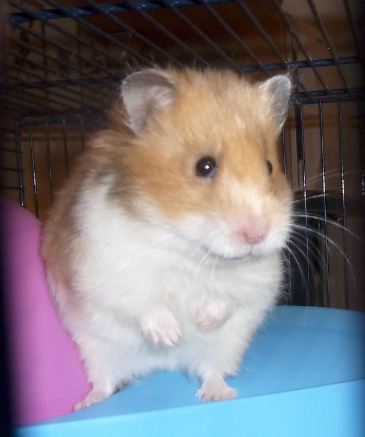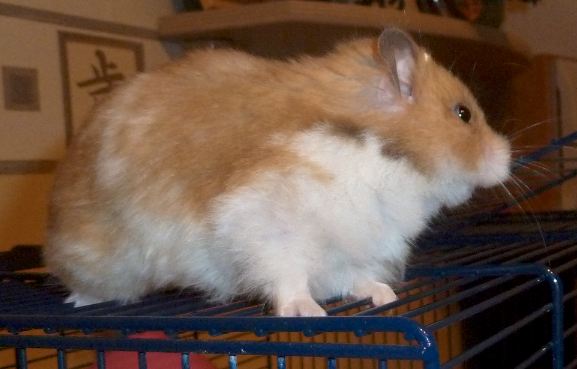Hoarding
2 November 2012 • John de Croon
asset management strategie, risk management, policy development
This article is about animals and how asset managers can learn from animals. I can imagine that this sounds strange, but soon it becomes clear.
About 10 years ago in the Dutch newspaper ‘De Telegraaf’ it could be read that a guinea pig was dumped into a container. We could not imagine that a sane person would do this. Someone had found the guinea pig in the container and brought it to an animal shelter in the town Kampen. My girlfriend and I already had three guinea  pigs and concluded that number 4 could be added. Thus, a trip to Kampen was made by car. Ecologically not entirely justified (about 80 km one way, but then not much people worried about that) and in terms financially it was not very smart (even then the petrol was not free, the fuel costs were higher than a guinea pig). But we felt that we had rescued a guinea pig and the animal has lived with us for several years before the end of the ‘technical life’ was achieved. Until today we have guinea pigs, rabbits, and besides a gold hamster named ‘Hammie’ (children invent such pretty names). That hamster we had. Or rather, have...... pigs and concluded that number 4 could be added. Thus, a trip to Kampen was made by car. Ecologically not entirely justified (about 80 km one way, but then not much people worried about that) and in terms financially it was not very smart (even then the petrol was not free, the fuel costs were higher than a guinea pig). But we felt that we had rescued a guinea pig and the animal has lived with us for several years before the end of the ‘technical life’ was achieved. Until today we have guinea pigs, rabbits, and besides a gold hamster named ‘Hammie’ (children invent such pretty names). That hamster we had. Or rather, have......
Our hamster was not very old, about one and a half (on average they become about 3, with a maximum of 7). They are nocturnal, so during daytime they do not do much. However, when most of the people crawl into bed, the hamster becomes active. They search for food and collect it for worse times. But those times should not come into our prosperous world, right?
One night I went to bed. Hammie lay for dead in his cage. He barely moved. ‘If that hamster is still alive tomorrow I will eat my shoe’, I said. And the next morning the hamster was deceased. That was a great drama for the children. ‘We will bury Hammie tonight’, I said. But that night I was home later than expected so burying Hammie did not happen. So my girlfriend put Hammie in a bag and left it in the container (which was just emptied) including the cover from the bottom of the cage together with the food Hammie collected in the cage. Almost two weeks later she wanted to put some dirt in the container when ....... two eyes looked at her. Hammie was alive! We had responded full of consternation to the miscreant who left the guinea pig in the container had now we had done this ourselves ....... The hamster had been in hibernation. This phenomenon was unknown to us in a heated house (so be warned). With the old food reserves in the container Hammie has survived. Instead of the end of his life cycle, Hammie is in the middle.
This story of Hammie the hamster brings me to the title of this column. That title was also recently in the newspaper. ‘Water companies should hoard in the future' could be read in Trouw[1]. In this newspaper was described that ´by mid-century from time to time the Dutch surface waters become so contaminated that it may not be suitable for making drinking water from it. Water companies should therefore consider to stock water for difficult times´. This was derived from a report by the Dutch National Institute of Health and Environment (RIVM). The researchers suggest that water should be purified more before it is distributed to the customers (via pipelines in the Netherlands) and to temporarily apply other sources of drinking water when needed.
A spokesman for the Association of Water Companies in the Netherlands (Vewin) gives a response in Trouw. The spokesman states that this has been done by means of for example the large water buffers in the Biesbosch, the IJsselmeer and the dunes. ´They are sometimes used without anyone noticing. Sometimes people get drinking water from another area´. Vewin called the report ´a description of what we already do´. It intrigues me that measures may be already taken, while stakeholders do not recognise it (or deem appropriate, which could also be the case). Due to the article in the newspaper I asked myself the question why the research was conducted. Is there a potential issue, or have the involved people in the drinking water sector done their work well, but should they have shouted a little louder?
 From this we can learn. First the animals lessons. It may seem that a rodent reached the end of its life (often this is true in our experience), but occasionally this is not the case (with us now 1 time on about 25 rodents and it might be possible that the guinea pig was dumped as well[2]). From this we can learn. First the animals lessons. It may seem that a rodent reached the end of its life (often this is true in our experience), but occasionally this is not the case (with us now 1 time on about 25 rodents and it might be possible that the guinea pig was dumped as well[2]).
Hamsters impose reserve stocks as a mitigation measure and hibernate. During hibernation their energy consumption is significantly reduced. It allows them to survive in difficult times and Hammie has proven that it works. These are strengths from nature which we could apply in asset management. We can hold strategic spares in stock. We will return to this subject in another column. The reduction of energy consumption is from the perspective of sustainability a good measure. Many of our customers have already defined a business value related to sustainability.
However the hibernation has a downside. If you keep yourself ‘death’, you face the risk that you will be treated like garbage. A lesson for asset managers is to not sit quietly in a hidden corner when the job is done. The water sector in this example might shout a bit louder if they are convinced that sufficient measures are in place.
The motto is ‘be good and tell it to the world.’
The question which is left is how I should eat my shoe. Or do I need to hide it for worse times?
[2] Though we have not experienced a guinea pig hibernating.
John de Croon is partner at AssetResolutions BV, a company he co-founded with Ype Wijnia. In turn, they give their vision on an aspect of asset management in a weekly column. The columns are published on the website of AssetResolutions, http://www.assetresolutions.nl/en/column
<< back to overview
|


